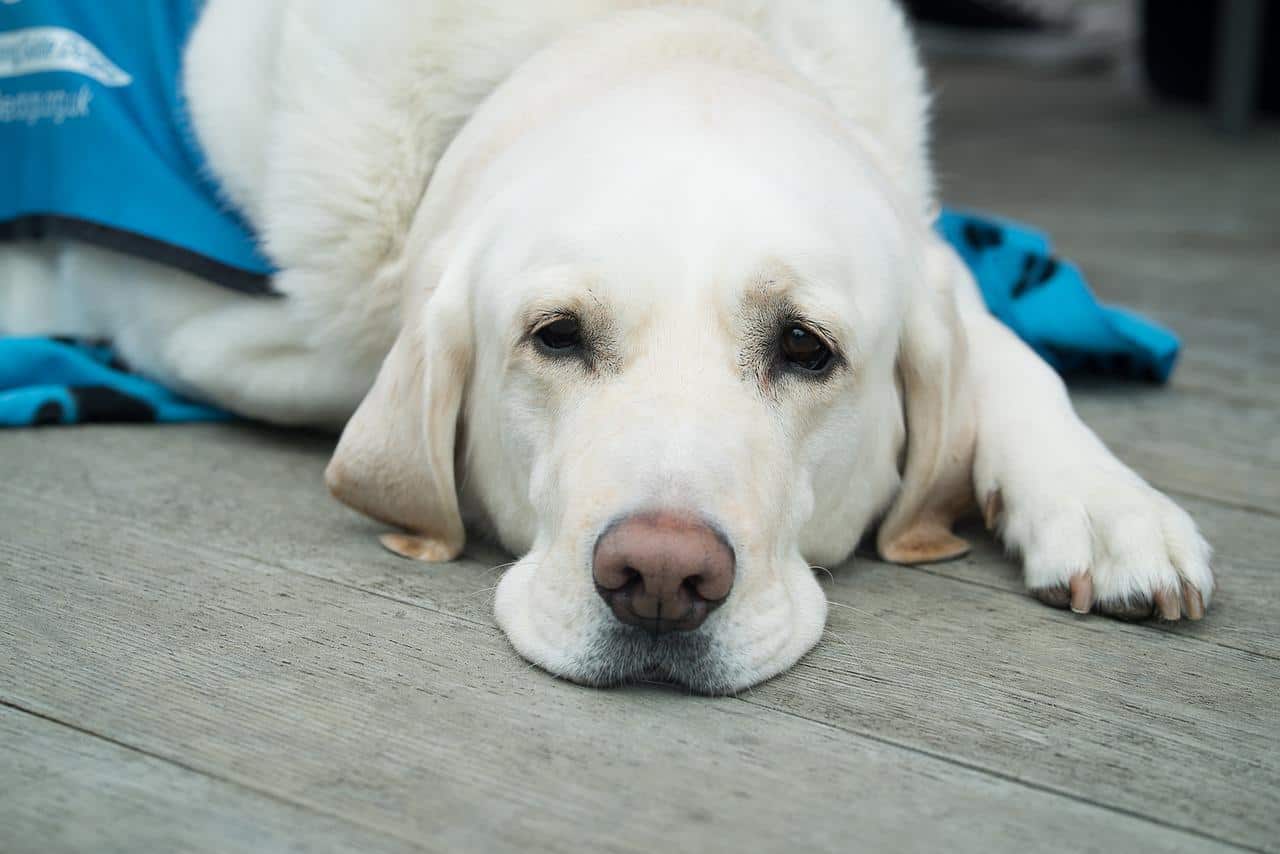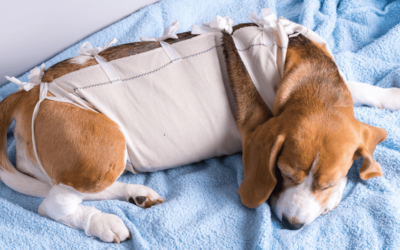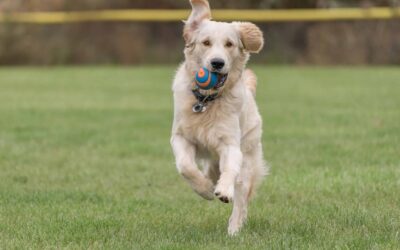A Complete Care Guide On How To Treat A Sprain On A Dog

When your beloved canine companion experiences a sprained leg, ankle, or paw, it can be distressing. Understanding the nature of these injuries is crucial in providing the appropriate care and support for your furry friend’s recovery. A sprain occurs when the ligaments that connect bones and stabilize joints are stretched or torn due to excessive force or overextension. strain, however, refers to the stretching or tearing of muscles or tendons. These injuries can range from mild to severe, and knowing the causes, types, and treatment approaches for dog sprains is essential for your pet’s well-being.
Causes of Dog Sprains
Dog sprains can occur due to various reasons, including sudden movements, strenuous activities, falls, or accidents. Common causes of sprains in dogs include:
- Sudden Movements: Dogs are naturally active and agile creatures. Abrupt changes in direction or speed during play, exercise, or even everyday movement can lead to sprains.
- Strenuous Activities: Engaging in high-intensity exercises, such as jumping, running, or agility training, can put excessive strain on your dog’s joints and ligaments, making them more prone to sprains.
- Falls or Accidents: Dogs can be curious and adventurous, occasionally resulting in falls or accidents that can cause sprains. Uneven surfaces, slippery floors, or collisions with objects or other animals can lead to sprained legs, ankles, or paws.
Strains vs. Sprains
Understanding the distinction between strains and sprains is essential in identifying your dog’s specific injury. The affected areas differ, while both strains and sprains involve soft tissue damage. A strain affects the muscles or tendons, which connect muscles to bones, while a sprain primarily involves the ligaments that connect bones and stabilize joints.
Signs of a strain in dogs may include muscle pain, stiffness, or difficulty moving the affected limb. Sprains, however, can cause swelling, tenderness, limping, or a reluctance to put weight on the injured leg, ankle, or paw. It’s important to consult a veterinarian to accurately diagnose the injury and determine the appropriate course of treatment for your furry friend.
Understanding Ligaments and Their Role in Dog Mobility
Ligaments play a crucial role in maintaining the stability and mobility of a dog’s joints. These tough bands of connective tissue connect bones to each other, providing support and preventing excessive movement. In a sprain, the ligaments are stretched or torn, compromising the joint’s stability and causing pain or discomfort for your furry companion.
Understanding the importance of ligaments and their vulnerability to injury can help you better comprehend the impact of a sprain on your dog’s mobility. Ligaments are composed of strong collagen fibers that provide strength and elasticity. When a dog experiences a sprained leg, ankle, or paw, these fibers may become damaged. Depending on the severity of the sprain, the ligament may stretch, partially tear, or completely rupture..
Detailed Look at Conditions Leading to Sprains
Sprains in dogs can occur in various locations, each with its causes and symptoms. Certain conditions can lead to sprains in different areas of your furry friend’s body.
Types of Dog Sprains
Leg Sprains in Dogs:
Leg sprains are relatively common among dogs and can affect the front or hind legs. They often occur due to sudden twisting or wrenching movements and result in pain, swelling, and lameness.
Paw Sprains in Dogs:
Dogs rely heavily on their paws for mobility, making them prone to sprains in this area. Paw sprains can be caused by stepping on uneven surfaces, sharp objects, or even excessive play. Symptoms may include limping, tenderness, and swelling.
Hip Sprains in Dogs:
The hip joint is a ball-and-socket joint that allows for a wide range of motion. Sprains in this area can occur due to trauma or excessive strain. Dogs with hip sprains may exhibit difficulty in standing up, jumping, or walking, along with pain and stiffness.
Ankle Sprains in Puppies:
Puppies are particularly susceptible to ankle sprains, as their bones and ligaments are still developing. Quick, sudden movements or falls can lead to ankle sprains, causing pain, swelling, and hindrance in their ability to walk or play.
Special Considerations for Puppies
Puppies have delicate bodies that are still growing and developing, making them more susceptible to sprains. Taking extra precautions is important when caring for a puppy with a sprained leg, ankle, or paw. Their bones and ligaments are not fully matured, which means the injury may have a lasting impact on their long-term health and mobility.
If you suspect your puppy has sprained a leg, ankle, or paw, it is crucial to seek veterinary care promptly. The veterinarian will assess the severity of the sprain and provide appropriate treatment options tailored to your puppy’s unique needs. With proper care and rehabilitation, most puppies can recover fully from sprains and regain their playful and energetic selves.
Diagnosing Dog Sprains
Accurately diagnosing a dog sprain is essential to ensuring the appropriate treatment approach is taken. While external symptoms may provide some indications, a veterinarian will often use additional diagnostic tools, such as X-ray imaging, to confirm the diagnosis.
Why Are X-rays a Crucial Tool in Diagnosing Sprains?
X-ray imaging allows veterinarians to visualize the bones, joints, and ligaments, enabling them to assess the injury’s extent accurately. X-rays can also help identify fractures, bone spurs, or any other abnormalities that may be present alongside the sprain. This information is vital in determining the severity of the sprain and developing an effective treatment plan.
During the X-ray procedure, your dog will be placed on a table or positioned in a specific way to obtain clear images. Sedation or anesthesia may be necessary to keep your furry friend calm and still during the procedure. The X-ray images will then be analyzed by a veterinarian to provide a comprehensive diagnosis.
Treatment Approaches for Dog Sprains
The treatment approach for a dog’s sprained leg, ankle, or paw depends on the severity of the injury and the specific area affected. Mild sprains may require conservative treatment and rest, while more severe cases may necessitate surgical intervention.
How to Treat a Dog’s Sprain
When it comes to treating a dog’s sprain, the following steps can help promote healing and alleviate discomfort:
- Rest: Restricting your dog’s movement and ensuring they avoid activities that could aggravate the sprain is crucial. This allows the injured tissues to heal without further strain.
- Ice Therapy: Applying ice packs wrapped in a towel to the affected area can help reduce swelling and inflammation. Remember to limit ice therapy sessions to 10-15 minutes at a time, several times a day.
- Compression: Gentle compression using a bandage or supportive wrap can provide stability to the injured area and help reduce swelling. Ensure that the compression is not too tight, as it may restrict blood flow.
- Elevation: Elevating the injured leg, ankle, or paw can help reduce swelling by allowing fluid to drain away from the area. Use a soft pillow or cushion to provide comfortable elevation.
Remember to consult with your veterinarian before implementing any treatment approach to ensure it aligns with your dog’s specific needs.
Treating Wrist Sprains in Dogs
Wrist sprains in dogs can be particularly challenging, as the front legs bear a significant portion of their weight. To effectively treat a wrist sprain, your veterinarian may recommend the following:
- Medications: Non-steroidal anti-inflammatory drugs (NSAIDs) may be prescribed to alleviate pain and reduce inflammation. Follow your veterinarian’s instructions regarding medication dosage and administration.
- Immobilization: In some cases, immobilizing the wrist joint with a splint or cast may be necessary to allow the ligaments to heal properly. Your veterinarian will guide you on the proper use and duration of immobilization.
- Physical Therapy: Once the initial healing phase is complete, physical therapy exercises may be recommended to restore strength and mobility to the wrist joint. These exercises should be performed under the guidance of a veterinary professional.
Managing Ankle Sprains in Dogs
Ankle sprains can significantly impact a dog’s mobility and comfort. To manage an ankle sprain effectively, consider the following:
- Restricted Activity: Limit your dog’s movement and avoid activities that could strain the ankle joint. Leash walks and supervised, controlled exercises can help maintain muscle tone without exacerbating the sprain.
- Warm Compresses: Applying warm compresses to the ankle joint can help promote blood flow and relax muscles, reducing pain and stiffness.
- Physical Rehabilitation: Once the initial healing phase is complete, your veterinarian may recommend physical rehabilitation exercises to strengthen the ankle joint and improve the range of motion. These exercises should be done under professional supervision.
Treatment for a Dog’s Ankle Sprain
In some cases, more severe ankle sprains may require additional treatment options, such as:
- Surgical Intervention: Surgical intervention may be necessary if the ankle sprain involves severe ligament damage or instability. Surgery aims to repair or reconstruct the damaged ligaments, restoring stability to the joint.
- Supportive Devices: Your veterinarian may recommend the use of supportive devices, such as ankle braces or boots, to provide additional stability to the ankle joint during the healing process.
How to Care for a Dog’s Paw Sprain
Paw sprains can be painful and limit your dog’s ability to walk comfortably. To care for a dog’s paw sprain, consider the following:
- Inspect the Paw: Examine the paw carefully to identify any visible signs of injury, such as cuts, abrasions, or foreign objects. If you notice any wounds or foreign bodies, seek veterinary attention.
- Keep the Paw Clean: Clean the paw using a gentle, pet-safe cleanser to prevent infection. Ensure that the paw is thoroughly dried after cleaning.
- Protective Booties: Protective booties can help cushion the paw and provide support during the healing process. These booties also protect the paw from further injury if your dog needs to go outside.
- Pain Management: Your veterinarian may prescribe pain medications to alleviate discomfort during the healing process. Follow the prescribed dosage and administration instructions carefully.
Remedies for a Dog’s Hip Sprain
Hip sprains can significantly impact your dog’s mobility and comfort. To provide relief and support during the healing process, consider the following remedies:
- Weight Management: Maintaining a healthy weight is crucial in minimizing stress on the hip joint. Consult with your veterinarian to develop a balanced diet and exercise plan to manage your dog’s weight effectively.
- Physical Therapy: Physical therapy exercises, such as gentle stretching and low-impact activities, can help improve hip joint flexibility and strengthen supporting muscles. Consult with a veterinary professional to develop an appropriate exercise routine.
- Orthopedic Bedding: Providing your dog with a supportive orthopedic bed can help alleviate pressure on the hip joint while they rest or sleep. These beds are designed to distribute weight evenly and provide comfort.
- Supplements: Certain supplements, such as glucosamine and chondroitin, may support joint health and reduce inflammation. Consult with your veterinarian to determine the appropriate supplements for your dog’s specific needs.
Surgery as a Treatment Option for Severe Sprains
Surgery may be necessary in severe cases to repair the damaged ligaments and restore joint stability. This is usually considered when conservative treatment approaches have failed or when there is a significant ligament tear. Surgical intervention may involve ligament reconstruction or stabilization procedures. It is important to consult with a veterinary orthopedic specialist to determine the most appropriate treatment option for your dog’s specific condition.
The Significance of Paw Care in Preventing Sprains
Proper paw care is essential in preventing sprains and other injuries in dogs. Regularly trimming your dog’s nails can prevent them from getting caught or snagged, reducing the risk of sprains. It is also important to keep the paw pads moisturized and free from cracks or dryness, as this can make them more susceptible to injuries. Additionally, providing a safe and controlled environment for your dog’s activities, such as avoiding excessive jumping or running on hard surfaces, can help minimize the risk of paw sprains.
How Can Pet Insurance Help You?
Pet insurance can bea valuable tool in managing the costs of treating dog sprain and other veterinary expenses. By having a pet insurance policy in place, you can have peace of mind knowing that you can provide medical care for your furry companion without worrying about the financial burden. Pet insurance can help cover the costs of veterinary consultations, diagnostic tests, medications, and even specialized treatments if required.
Reimbursement
This method is themost common for pet insurance companies. You pay out of pocket for the veterinarian bill, and then the insurance company reimburses you for what’s covered under the insurance plan. The steps look like this.
- You pay the vet bill after your dog’s visit.
- You fill out the pet insurance claim form.
- Submit the claim form and other required documentation to the insurer.
- After the claim is approved, you will be reimbursed for eligible expenses.
What Does Odie Pet Insurance Cover?
Pet insurance covers various veterinary expenses, providing financial protection and peace of mind for pet owners. Here are the details of the coverage options offered by Odie PetInsurance:
Illness & Injury Plan
The Illness & Injury Plan is an all-inclusive insurance plan designed to cover a wide range of medical needs for your pet. This plan includes comprehensive coverage for various illnesses, injuries, and veterinary services. Some of the covered items include:
- 24/7 Televet Chat
- Emergency vet visits
- Overnight hospital stays
- IV Fluids & Medications
- Medical Supplies
- Surgeries
- MRI/CAT Scans
- Rehabilitative Care
- Prescription Medications
- Gastrointestinal issues
- Laboratory Tests
Accident-Only Plan
The Accident-Only Plan is designed for pet owners seeking coverage specifically for accidents. This plan provides financial protection for emergency veterinary care resulting from accidental injuries. It includes 90% reimbursement up to $10,000 each year, with a $250 annual deductible.
Here’s an overview of the Accident-Only Plan:
- Coverage for broken bones, sprains, eye injuries, and traumatic dental fractures.
- Coverage for wounds, including bite wounds, lacerations, snake bites, and bee stings.
- Veterinary treatments covered for accidental injuries include X-rays & ultrasounds, laboratory tests, emergency care, hospitalization, CT scan & MRI, and surgery.
The Wellness Add-on Plan
The Wellness Plan is an add-on for routine care coverage you can purchase with an insurance policy. It focuses on preventive care and covers routine veterinary services. Odie has two wellness plan options available:
Basic Plan:
- Covers services such as spay/neuter and teeth cleaning, rabies vaccination, flea & tick prevention, heartworm prevention, vaccination/titer, wellness exam, heartworm test or FELV screen, blood, fecal, parasite exam, microchip, urinalysis or ERD, and deworming.
- Reimbursement up to $305 per year.
Plus Plan:
- Ideal for puppies and kittens.
- Covers services such as spay/neuter and teeth cleaning, rabies vaccination, flea & tick prevention, heartworm prevention, vaccination/titer, wellness exam, heartworm test or FELV screen, blood, fecal, parasite exam, microchip, urinalysis or ERD, and deworming.
- Reimbursement up to $535 per year.
*Updated on May 17, 2024




